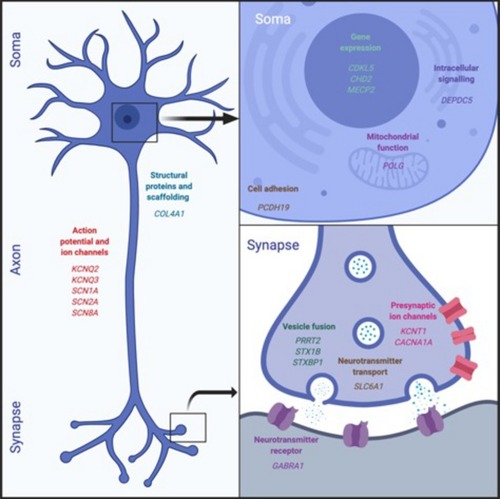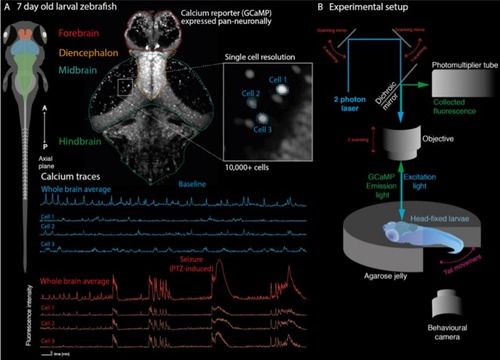- Title
-
Functional Genomics of Epilepsy and Associated Neurodevelopmental Disorders Using Simple Animal Models: From Genes, Molecules to Brain Networks
- Authors
- Rosch, R., Burrows, D.R.W., Jones, L.B., Peters, C.H., Ruben, P., Samarut, É.
- Source
- Full text @ Front. Cell. Neurosci.
|
Epilepsy genes. This figure illustrates the functional classes of the most commonly identified genetic mutations in children with DDEs. These affect a broad range of neuronal functions, ranging from gene expression and intracellular signaling to neurotransmission. |
|
Recording whole-brain dynamics at single-cell resolution in zebrafish models of neurodevelopmental disorders. |


